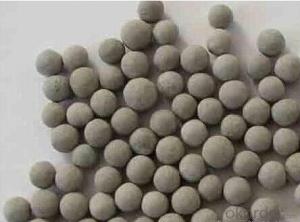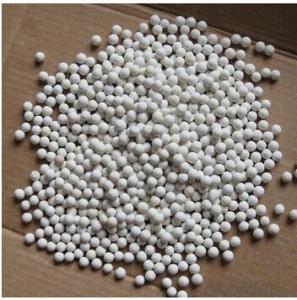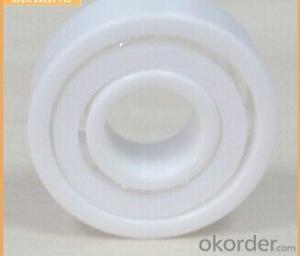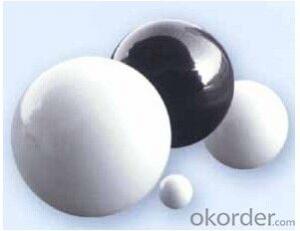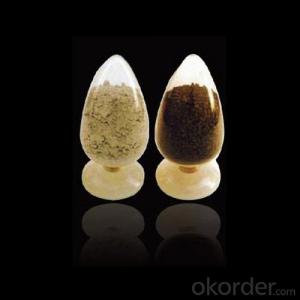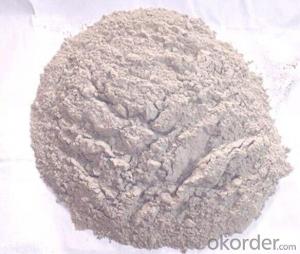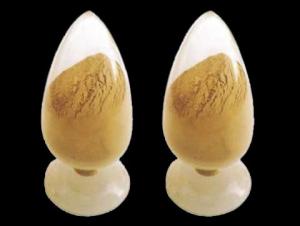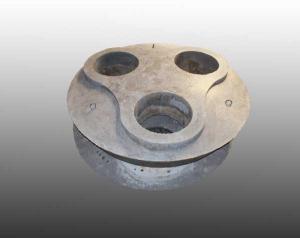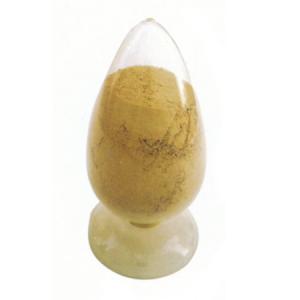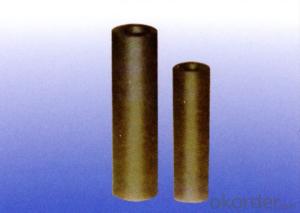Bio Ceramic Ball Water Treatment Monolithic Refractories for Iron and Steel Industry
- Loading Port:
- Qingdao
- Payment Terms:
- TT OR LC
- Min Order Qty:
- 500 m.t.
- Supply Capability:
- 3000 m.t./month
OKorder Service Pledge
OKorder Financial Service
You Might Also Like
Main Ingredients:
Tourmaline: 30%
Porcelain clay: 20%
High grade clay: 15-20%
Others: 30-35%
Main Features:
Amount of generating negative ions: 400500pc/s.cm3
Radiance of far infrared ray the wavelength is 225μm≥85%
PH of soaking water solution: 7.2-7.6
Insoluble, gradually releasing mineral substance
Instruction For Use:
Should wash with clean water for two times in the first, then can be directly used for treating drinking water. Keep from raining, and avoid moisture. Stored in dry place.
Note:
the highest using temperature is at 950
Description:
One kind of environmental protection and health care ball that is mainly made of the natural nonmetal mineral tourmaline, kaolin and high-grade clay by nanometer combination technology, special formula and agglomeration techniques, and used with the ceramic ball for activating, purifying and mineralizing drinking water.
Application :
For various types of water purifier, drinking water dispenser and water supply system and equipments, agriculture and industry, etc.
- Q: How are monolithic refractories used in the repair and maintenance of ladle and tundish covers?
- Due to their excellent thermal resistance and durability, monolithic refractories are commonly utilized for repairing and maintaining ladle and tundish covers. These covers play a crucial role in the containment of molten metal and the prevention of heat loss during the steelmaking process. When exposed to high temperatures and thermal cycling, ladle and tundish covers can undergo wear and tear, resulting in cracks, spalling, or even complete failure. This is where monolithic refractories come into play. Monolithic refractories are refractory materials that are not shaped and can be easily molded and applied to damaged areas of ladle and tundish covers. They can be cast, gunned, or sprayed onto the surface, enabling quick and efficient repairs. Typically, these refractories consist of a matrix material, such as alumina, silica, or magnesia, along with various additives and bonding agents. The specific composition depends on the application requirements and severity of operating conditions. The repair process begins by identifying the damaged areas of the ladle or tundish cover. Any loose or damaged refractory material is removed, and the surface is prepared for the application of the monolithic refractory. This may involve cleaning, roughening, or even preheating the surface, depending on the specific requirements. The monolithic refractory is then mixed with water or a suitable binder to achieve a workable consistency. It is then applied to the damaged areas using the appropriate method, such as casting or spraying. After application, the refractory material is allowed to dry and cure, typically through controlled heating. Once cured, the monolithic refractory forms a robust and durable lining that can withstand the high temperatures, thermal cycling, and chemical reactions occurring during ladle and tundish operation. It provides excellent thermal insulation, minimizing heat loss and reducing energy consumption. Moreover, monolithic refractories exhibit superior resistance to slag, metal penetration, and erosion, ensuring extended service life for ladle and tundish covers. They also possess good thermal shock resistance, enabling them to endure rapid temperature changes without cracking or spalling. In conclusion, monolithic refractories are indispensable for repairing and maintaining ladle and tundish covers due to their thermal resistance, durability, and ease of application. Their ability to withstand high temperatures, thermal cycling, and chemical reactions ensures the integrity and efficiency of ladle and tundish operations in the steelmaking industry.
- Q: How do monolithic refractories contribute to the overall efficiency of ladles and tundishes?
- Monolithic refractories play a crucial role in enhancing the overall efficiency of ladles and tundishes in several ways. Firstly, monolithic refractories offer superior thermal insulation, reducing heat losses and enhancing heat retention within the ladles and tundishes. This helps in maintaining the desired temperature of the molten metal for extended periods, minimizing energy consumption and ensuring consistent casting quality. Secondly, monolithic refractories provide excellent resistance to chemical corrosion and erosion from molten metals and slag, thereby extending the service life of ladles and tundishes. This reduces the frequency of refractory repairs or replacements, leading to cost savings and increased operational efficiency. Additionally, monolithic refractories can be easily installed or repaired, saving time and labor compared to traditional brick or precast refractory lining methods. This contributes to minimizing downtime during maintenance or relining activities, allowing for continuous production and maximizing overall productivity. Overall, monolithic refractories enhance the efficiency of ladles and tundishes by improving thermal insulation, increasing resistance to chemical corrosion, reducing maintenance downtime, and extending the service life of these essential equipment in the metal casting process.
- Q: How do monolithic refractories resist chemical corrosion in iron and steel applications?
- Monolithic refractories are highly resistant to chemical corrosion in iron and steel applications due to their unique characteristics and composition. These refractories are engineered with a combination of different materials such as aggregates, binders, and additives, which provide them with exceptional resistance to chemical attack. One key factor that contributes to their resistance is the use of high-quality raw materials. Monolithic refractories are typically made from high-alumina or alumina-silica aggregates, which have excellent resistance to chemical reactions. These aggregates are carefully selected to ensure they can withstand the harsh conditions encountered in iron and steel applications, including exposure to molten metal, slag, and various chemical compounds. Moreover, the binders used in monolithic refractories play a crucial role in their resistance to chemical corrosion. Common binders include clay, calcium aluminate cement, or colloidal silica. These binders help to hold the refractory materials together and provide additional protection against chemical attack. They form a dense and impermeable structure, which prevents corrosive substances from penetrating the refractory lining. Furthermore, monolithic refractories often incorporate additives that enhance their chemical resistance. These additives can include antioxidants, anti-spalling agents, and various other compounds that further protect the refractory lining from chemical attack. These additives help to neutralize corrosive elements, inhibit the formation of harmful compounds, and reduce the overall corrosion rate. Additionally, the unique installation method of monolithic refractories also contributes to their resistance to chemical corrosion. Unlike traditional brick refractories, monolithic refractories are installed as a single, continuous lining. This eliminates the need for joints or gaps that could potentially serve as weak points for chemical penetration. The monolithic nature of these refractories ensures a tight and seamless lining, reducing the vulnerability to chemical attack. Overall, the combination of high-quality raw materials, effective binders, and beneficial additives, along with the monolithic installation technique, grants monolithic refractories exceptional resistance to chemical corrosion in iron and steel applications. This resistance allows them to withstand the harsh conditions encountered in these industries, ensuring the longevity and efficiency of the refractory lining.
- Q: What are the advancements in monolithic refractory technology for the iron and steel industry?
- There have been several advancements in monolithic refractory technology for the iron and steel industry. One significant advancement is the development of low-cement castables, which have improved high-temperature strength, thermal shock resistance, and erosion resistance compared to conventional castables. Another advancement is the introduction of ultra-low cement castables, which offer even higher strength and improved resistance to spalling and alkali attacks. Additionally, the use of advanced bonding systems and additives has led to the development of self-flowing castables, making installation easier and more efficient. These advancements have greatly improved the performance and longevity of refractory linings in iron and steel industry applications.
- Q: What are the considerations for repairing and relining monolithic refractories?
- When it comes to repairing and relining monolithic refractories, there are several key considerations that need to be taken into account. Firstly, it is important to assess the extent of the damage or wear to the refractory lining. This can be done through visual inspection, as well as non-destructive testing techniques such as ultrasonic or thermal imaging. Understanding the severity and location of the damage will help in determining the appropriate repair or relining method. Another consideration is the type of monolithic refractory material being used. Different materials have different properties and performance characteristics, and this needs to be considered when selecting the repair method. For example, some materials may require high-temperature curing or specialized equipment for installation. The operating conditions of the refractory lining also need to be taken into account. Factors such as temperature, chemical exposure, and mechanical stress can affect the performance and longevity of the lining. The repair or relining method should be selected to ensure that it can withstand these conditions and provide long-lasting protection. Additionally, the downtime and cost implications of the repair or relining process need to be considered. Some methods may require longer curing or drying times, which can result in extended shutdown periods. It is important to weigh the benefits of the repair or relining against the potential production losses and expenses associated with the downtime. Lastly, it is crucial to follow industry standards and guidelines when repairing or relining monolithic refractories. This ensures that the repairs are done correctly and in a safe manner, minimizing the risk of future damage or failure. Consulting with refractory experts or manufacturers can provide valuable insights and guidance in this regard. In conclusion, the considerations for repairing and relining monolithic refractories include assessing the extent of damage, understanding the properties of the refractory material, considering the operating conditions, evaluating downtime and cost implications, and following industry standards and guidelines.
- Q: What are the key properties of gunning mixes used for monolithic refractory repairs?
- The key properties of gunning mixes used for monolithic refractory repairs include: 1. High durability: Gunning mixes should have excellent resistance to thermal shock, abrasion, and chemical attack. This ensures that the repaired refractory material can withstand the harsh conditions in industrial furnaces and kilns. 2. High strength: Gunning mixes should have a high compressive strength to provide structural integrity to the repaired refractory lining. This is especially important in areas that are subjected to high mechanical stress or load. 3. Easy application: Gunning mixes should have good gunning properties, allowing for easy and efficient application. They should have the ability to be sprayed or gunned onto the surface to be repaired, providing a smooth and even coating. 4. Quick setting and drying: Gunning mixes should have a fast setting and drying time to minimize downtime during repairs. This ensures that the repaired refractory lining can be quickly put back into service, reducing production losses. 5. Good adhesion: Gunning mixes should have excellent adhesion to the existing refractory material. This ensures a strong bond between the new repair material and the old lining, preventing any potential delamination or separation. 6. Thermal stability: Gunning mixes should have a high resistance to thermal cycling and temperature fluctuations. They should be able to maintain their structural integrity and mechanical properties even under extreme heat conditions. 7. Chemical compatibility: Gunning mixes should be chemically compatible with the materials they come into contact with, such as molten metals or corrosive gases. This ensures that the repaired refractory lining can withstand the corrosive effects of these substances. Overall, the key properties of gunning mixes for monolithic refractory repairs are focused on providing durability, strength, easy application, quick setting, good adhesion, thermal stability, and chemical compatibility. These properties ensure that the repaired refractory lining can effectively withstand the harsh operating conditions in industrial furnaces and kilns, prolonging their lifespan and reducing maintenance costs.
- Q: What are the recommended curing times for monolithic refractories?
- The recommended curing times for monolithic refractories can vary depending on the specific type of refractory and its application. However, in general, it is important to follow the manufacturer's guidelines for curing times to ensure the proper setting and development of the refractory material. For conventional castable refractories, a typical curing time can range from 24 to 48 hours. During this period, it is essential to control the temperature and humidity conditions to allow for the hydration and hardening of the castable. This curing time is crucial to achieve the desired strength and durability of the refractory lining. On the other hand, low cement or ultra-low cement castables may require a longer curing time due to their reduced water content. These refractories often need a curing period of 48 to 72 hours to allow for proper bonding and solidification. For gunning mixes or shotcrete applications, the curing time might be shorter, usually around 8 to 12 hours. This faster curing process is facilitated by the addition of accelerators to the mix, which promote rapid setting and hardening. It is important to note that these recommended curing times are just general guidelines, and specific recommendations may vary depending on factors such as ambient temperature, humidity, and the specific refractory material being used. Therefore, it is always advisable to consult the manufacturer's instructions or seek guidance from a refractory specialist to ensure optimal curing and performance of the monolithic refractory.
- Q: What are the specific requirements of monolithic refractories for continuous casting applications?
- To withstand the extreme temperatures and thermal shock conditions experienced during continuous casting, monolithic refractories have specific requirements. First and foremost, these refractories must possess high thermal conductivity, enabling them to efficiently transfer heat away from the molten metal and maintain a stable casting temperature. This is crucial in preventing the formation of defects such as cracks, hot spots, and uneven solidification in the cast product. Secondly, monolithic refractories for continuous casting applications need to exhibit high refractoriness. This means they can endure the high temperatures of the molten metal without melting or deforming, ensuring the refractories can provide a protective lining and maintain their structural integrity throughout the casting process. In addition, these refractories must demonstrate excellent resistance to thermal shock. The continuous casting process involves rapid cooling and heating cycles, resulting in significant temperature differentials and inducing thermal stresses. Monolithic refractories with low thermal expansion and high thermal shock resistance can endure these conditions without cracking or spalling. Moreover, good erosion and corrosion resistance are vital requirements for monolithic refractories in continuous casting applications. The molten metal and slag can be highly corrosive and abrasive, causing wear and chemical attack on the refractory lining. Therefore, refractories with high resistance to erosion and corrosion are essential to ensure the longevity and stability of the lining. Lastly, monolithic refractories for continuous casting applications should possess good workability and ease of installation. This allows for efficient and precise lining installation, minimizing downtime during maintenance or repairs. Overall, the specific requirements for monolithic refractories in continuous casting encompass high thermal conductivity, refractoriness, thermal shock resistance, erosion and corrosion resistance, as well as good workability. Fulfilling these requirements guarantees that the refractories effectively safeguard the casting equipment and maintain the quality of the cast products.
- Q: How does the choice of monolithic refractory impact the overall cost of iron and steel production?
- The overall cost of iron and steel production can be greatly affected by the choice of monolithic refractory. Monolithic refractory, unlike traditional brick or tile refractories, refers to a type of refractory material that is installed continuously. One important factor that impacts the cost of iron and steel production is the lifespan of the refractory. Monolithic refractories generally have a longer lifespan compared to traditional brick or tile refractories. This means that they require less frequent maintenance and replacement, resulting in lower overall costs over time. Additionally, monolithic refractories have a higher resistance to thermal shock and mechanical stress, which further extends their lifespan and reduces the need for repairs and replacements. Another crucial consideration is the energy efficiency of the monolithic refractory. These refractories possess better insulation properties, leading to reduced heat loss during the iron and steel production process. This helps lower energy consumption and, consequently, the overall cost of production. The improved insulation also contributes to a more stable and controlled temperature profile within the furnace, resulting in better product quality and reduced scrap rates. Furthermore, monolithic refractories offer greater flexibility in terms of installation and repair. They can be easily applied to complex shapes and structures, allowing for more efficient use of refractory materials. This reduces waste and lowers material costs. The ease of installation also saves time and labor, further contributing to cost savings. Additionally, monolithic refractories are known for their superior performance in high-temperature environments. They exhibit excellent thermal conductivity and resistance to chemical attacks, ensuring optimal furnace operation and reducing the likelihood of downtime and production delays. This, in turn, minimizes the impact of unexpected maintenance, repairs, and shutdowns on the overall cost of iron and steel production. In conclusion, the choice of monolithic refractory has a significant impact on the overall cost of iron and steel production. Its longer lifespan, improved energy efficiency, ease of installation and repair, and superior performance in high-temperature environments all contribute to cost savings in various aspects of the production process. Thus, careful consideration of the type of monolithic refractory used can result in significant cost reductions and improved overall efficiency in iron and steel production.
- Q: How do monolithic refractories contribute to reducing downtime in iron and steel plants?
- Monolithic refractories contribute to reducing downtime in iron and steel plants by providing enhanced durability and resistance to high temperatures, chemical corrosion, and mechanical wear. These refractories can be quickly and easily installed, repaired, or replaced, minimizing the time required for maintenance and reducing production interruptions. Their versatile and customizable nature allows for efficient lining of various equipment, such as furnaces, ladles, and converters, ensuring a continuous and uninterrupted production process.
Send your message to us
Bio Ceramic Ball Water Treatment Monolithic Refractories for Iron and Steel Industry
- Loading Port:
- Qingdao
- Payment Terms:
- TT OR LC
- Min Order Qty:
- 500 m.t.
- Supply Capability:
- 3000 m.t./month
OKorder Service Pledge
OKorder Financial Service
Similar products
Hot products
Hot Searches
Related keywords
